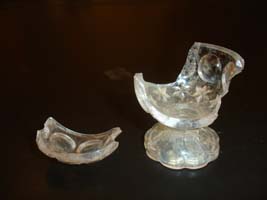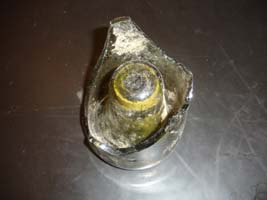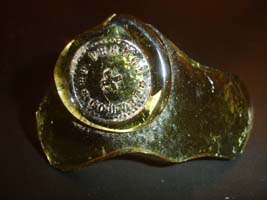Things have seemed fairly quiet in the lab this spring and summer; now that the course CASA 103/203 has come to an end and the lab is no longer filled with students anxiously scrambling through boxes of artifacts to find materials to analyze for their projects. Throughout Spring Quarter, I have worked as a research assistant in the lab, helping Bryn out with the project he is working on for his dissertation; this has mostly entailed additional artifact cataloging and analysis. While I have come across beads, buttons, and other small finds, my efforts have primarily been devoted to glass analysis. I have worked with a wide range of glass materials, ranging from glass tumblers to window glass sherds, but most of the identifiable glass I have catalogued seems to have come from bottles of some sort. In particular, I have found many fragments from alcoholic-beverage bottles, and even a few bottles that are almost entirely intact. To the best of my ability, I have attempted to identify the origins and contents of these bottles. I plan on spending even more time with such vessels in the upcoming weeks, as I assist Professor Voss in conducting research for her project on alcohol consumption practices at the Market Street site. Among the most interesting finds I have come across in my cataloging are fragments from two tiny glass cups, which appear to have been egg cups. One of the cups is nearly complete, and both cups are made of transparent glass and bear the same pattern of engraved stars. They seem to match each other and might have come from a set. Does anyone know anything more about these cups?
This wine bottle was another particularly striking find. Although it is highly fragmented, most of its pieces were successfully recovered. One of its 21 fragments bears a maker’s mark that reads “ED. PERNOD COUVET.” Upon hunting around for the origins of this mark, I discovered that it was probably the mark of the Pernod Fils Factory that operated in Couvet, Switzerland in the 19th century. The Pernod family was especially known for absinthe production and ran factories in both Switzerland and France. Edouard Pernod was the eldest son in the family and took over the Couvet factory in 1827, transferring it to his own name.
Featured Artifact
This artifact is especially significant as it might elucidate details on trade networks and economic patterns in the Market Street site: was wine a commodity that was imported from European manufacturers in bulk to merchants and stores internal to the site? Or, conversely, was this one bottle a rarity that represented a gift or purchase from an outside supplier? It will be interesting to see if more bottles with maker’s marks associated with the same manufacturer turn up.


